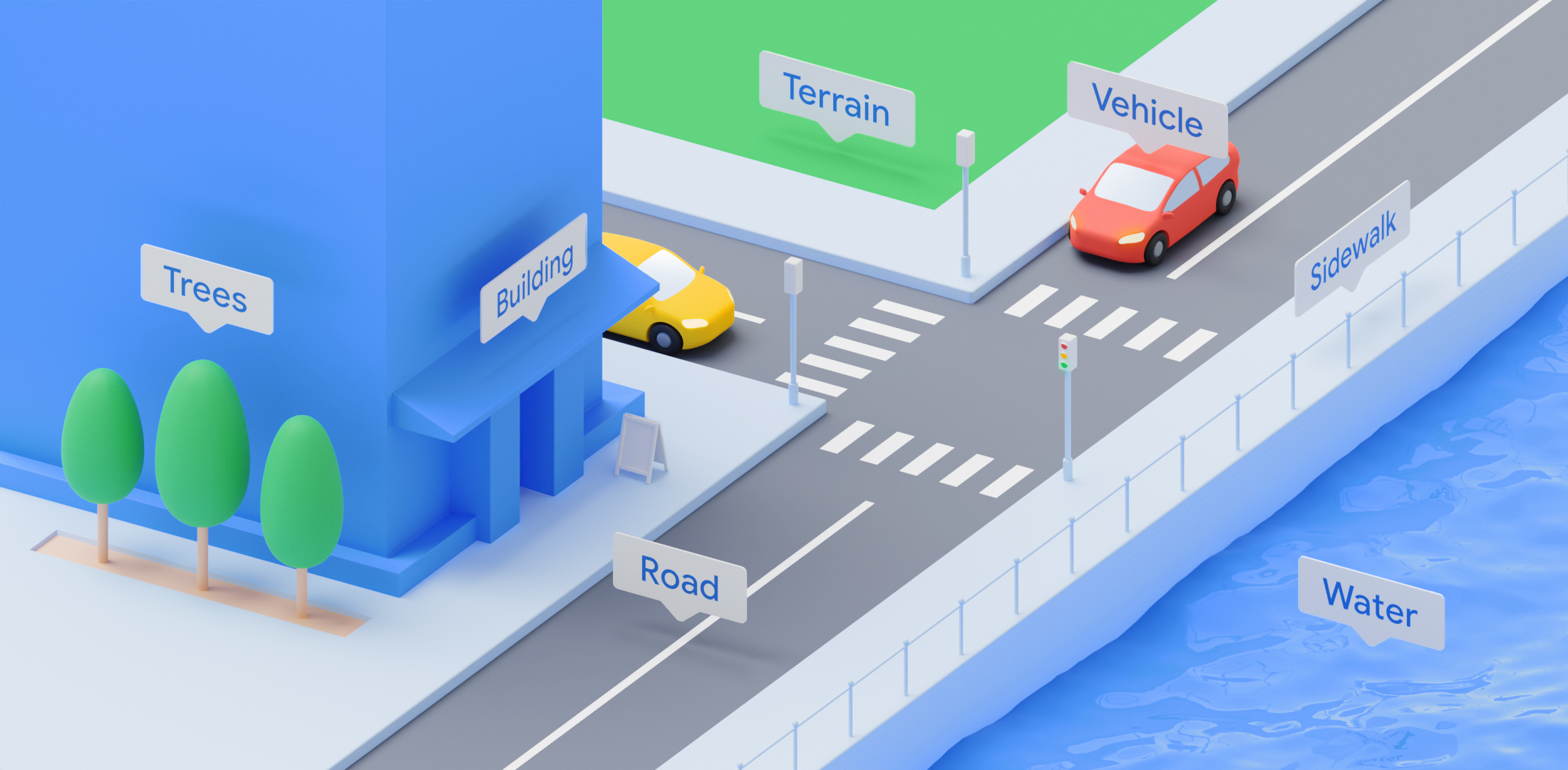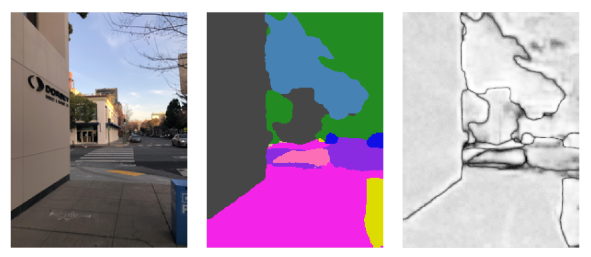平台专用指南
Android (Kotlin/Java)
Android NDK (C)
iOS
Unity(AR Foundation)

借助 Scene Semantics API,开发者可以了解用户周围的场景,这是许多高品质 AR 体验所必需的。Scene Semantics API 基于机器学习模型构建,可提供实时语义信息,以补充 ARCore 中的现有几何信息。
给定一张户外场景图片,该 API 会针对一组实用的语义类别(例如天空、建筑物、树木、道路、人行道、车辆、人等)为每个像素返回一个标签。除了像素标签之外,Scene Semantics API 还会为每个像素标签提供置信度值,并提供一种简单易用的方式来查询给定标签在户外场景中的普遍性。
从左到右:输入图片示例、像素标签的语义图像和相应的置信度图像:

借助 Scene Semantics API,开发者可以识别特定场景组件,例如道路和人行道(用于帮助用户穿越陌生的城市)、人和车辆(用于在动态对象上渲染遮挡)、天空(用于在一天中的任何时间创建日落)、建筑物(用于修改其外观和锚定虚拟对象)。
语义标签和质量
Scene Semantics API 提供多个标签,每个标签都有相应的质量或可靠性。一般来说,与较小或较少见的物体/表面类别相比,ML 模型更擅长预测较大、较常见的物体/表面类别。这些类可以分为以下质量层级,从高到低依次排列:
| 语义标签质量层级 | |
|---|---|
| 主要场景组件 |
|
| 主要场景详情 |
|
| 次要场景细节 |
|
设备兼容性
Scene Semantics API 与 Depth API 共用相同的受支持设备列表。如需查看同时支持这两个 API 的设备的最新列表,请参阅 ARCore 支持的设备页面。
支持的使用场景
Scene Semantics API 专为以下场景而设计:
室外场景:仅支持室外场景,不适用于室内用例。
纵向:仅应在设备的默认屏幕方向模式(即纵向)下使用。不保证横屏模式下的语义标签质量。

